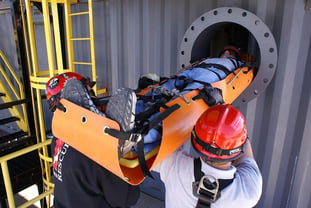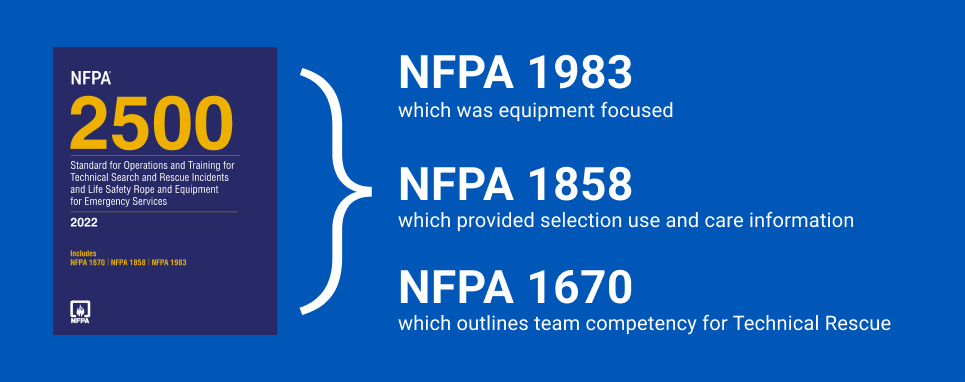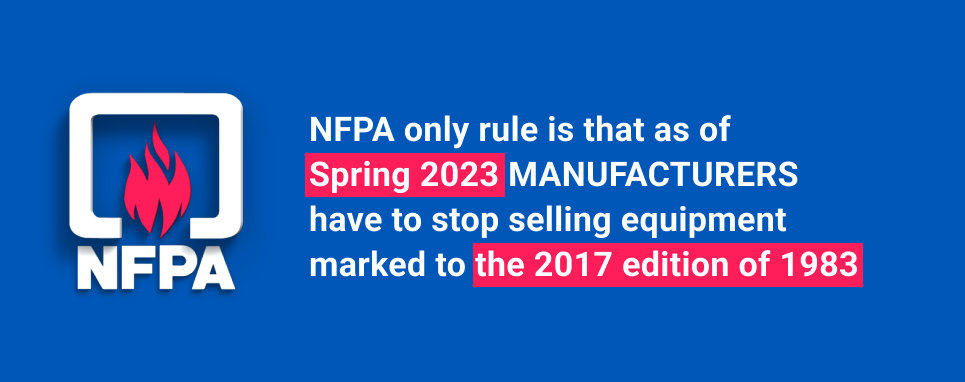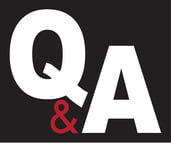 QUESTION: How often should respiratory protection equipment be inspected, cleaned, and replaced in an industrial rescue setting?
QUESTION: How often should respiratory protection equipment be inspected, cleaned, and replaced in an industrial rescue setting?
ANSWER:
That's a great question! While OSHA’s 1910.134 – Respiratory Protection Standard doesn't provide a specific schedule for inspection, cleaning, and replacement, it does emphasize the need for you and your company to create one. This schedule should follow the manufacturer's guidelines for your specific respiratory protection equipment. Remember that this is a general guide and not specific to your equipment.
"Always refer to the manufacturer's guidelines for the best results."
 Half-face respirators are a type of protective gear that covers the nose and mouth. They use replaceable filters or cartridges to remove contaminants from the air. These respirators are ideal for environments with moderate levels of airborne hazards. Some of the places where half-face respirators are commonly used include manufacturing plants where workers are exposed to moderate levels of airborne particulates like dust, pollen, or metal fumes, as well as laboratories where there is a risk of exposure to low concentrations of hazardous chemicals or solvents during handling or mixing processes. When using half-face respirators, it is vital to inspect the facepiece for cracks, tears, or distortion. The condition of the straps or head harness should also be checked for elasticity and proper adjustment. Additionally, the inhalation and exhalation valves should be examined for any signs of damage or deterioration and inspect the filter or cartridge connections to ensure they are securely attached without any leaks.
Half-face respirators are a type of protective gear that covers the nose and mouth. They use replaceable filters or cartridges to remove contaminants from the air. These respirators are ideal for environments with moderate levels of airborne hazards. Some of the places where half-face respirators are commonly used include manufacturing plants where workers are exposed to moderate levels of airborne particulates like dust, pollen, or metal fumes, as well as laboratories where there is a risk of exposure to low concentrations of hazardous chemicals or solvents during handling or mixing processes. When using half-face respirators, it is vital to inspect the facepiece for cracks, tears, or distortion. The condition of the straps or head harness should also be checked for elasticity and proper adjustment. Additionally, the inhalation and exhalation valves should be examined for any signs of damage or deterioration and inspect the filter or cartridge connections to ensure they are securely attached without any leaks.
Full-face respirators are designed to provide both respiratory and eye protection. They cover the entire face and offer superior protection against gases, vapors, and particulates. These devices are particularly useful in workplaces where workers are exposed to chemicals or toxic fumes, such as chemical processing plants or industrial painting operations. Inspection should involve checking the entire facepiece for any cracks, scratches, or damage that could compromise its integrity. The condition of the head harness and straps should also be assessed to ensure that they are intact and adjustable. Additionally, the respirator's lens should be inspected for scratches, fogging, or other impairments affecting visibility. Finally, test the operation of the inhalation and exhalation valves to ensure that they open and close correctly.
 Self-contained breathing Apparatus (SCBAs) offer the highest level of respiratory protection and are utilized in environments where the air is immediately dangerous to life or health (IDLH). They include a full-face mask connected to a compressed air cylinder worn on the back. SCBAs are commonly used in confined spaces like storage tanks, sewers, or underground tunnels where there is a risk of oxygen deficiency or the presence of toxic gases. They are also used in firefighting operations where firefighters need respiratory protection in environments with high levels of smoke, heat, and toxic gases.
Self-contained breathing Apparatus (SCBAs) offer the highest level of respiratory protection and are utilized in environments where the air is immediately dangerous to life or health (IDLH). They include a full-face mask connected to a compressed air cylinder worn on the back. SCBAs are commonly used in confined spaces like storage tanks, sewers, or underground tunnels where there is a risk of oxygen deficiency or the presence of toxic gases. They are also used in firefighting operations where firefighters need respiratory protection in environments with high levels of smoke, heat, and toxic gases.
Before using SCBAs, it is important to inspect the facepiece, head harness, and straps for any signs of damage or wear. Additionally, check the cylinder for dents, corrosion, or any other signs of damage. Inspect the regulator, pressure gauge, and other components to ensure they are functioning properly. Finally, make sure that the emergency bypass valve is operating correctly.
 Supplied Air Respirators (SARs) are devices that deliver clean air from an external source, such as an air compressor or compressed air cylinder, to the wearer's mask or hood. These respirators are commonly used in environments with limited oxygen or high concentrations of contaminants. SARs can be particularly useful in welding operations where workers require a continuous supply of clean air to protect against metal fumes and welding gases.
Supplied Air Respirators (SARs) are devices that deliver clean air from an external source, such as an air compressor or compressed air cylinder, to the wearer's mask or hood. These respirators are commonly used in environments with limited oxygen or high concentrations of contaminants. SARs can be particularly useful in welding operations where workers require a continuous supply of clean air to protect against metal fumes and welding gases.
To ensure that SARs function correctly, it is crucial to inspect the airline hose for cuts, kinks, or abrasions. Additionally, it is vital to check the connections between the respirator and the air supply source for leaks. Furthermore, ensuring that the regulator and pressure gauge are functioning correctly is crucial. Finally, verifying that the air supply source provides clean, breathable air is essential to the safe and effective use of SARs.
"It all comes down to this… The human body takes about 20,000 breaths per day. How much do you trust your equipment with one of those breaths?"
 Brannon Aaron, ASP, NRP is an Associate Safety Professional through the Board of Certified Safety Professionals and a Nationally Registered Paramedic who works as a Safety Specialist and CSRT Crew Chief at Roco Rescue. Brannon has an extensive military background as well as years of experience in Pre-hospital Emergency Medical Services and emergency response settings.
Brannon Aaron, ASP, NRP is an Associate Safety Professional through the Board of Certified Safety Professionals and a Nationally Registered Paramedic who works as a Safety Specialist and CSRT Crew Chief at Roco Rescue. Brannon has an extensive military background as well as years of experience in Pre-hospital Emergency Medical Services and emergency response settings.

 Fall Arrest vs. Fall Restraint:
Fall Arrest vs. Fall Restraint: Choosing Between Fall Arrest and Fall Restraint:
Choosing Between Fall Arrest and Fall Restraint:
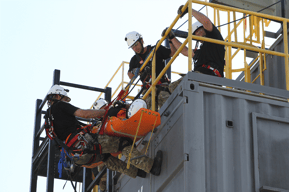 Studies in emergency medicine have brought a critical perspective to the use of spine boards. While they are indispensable in certain situations, these studies highlight the negative effects of prolonged immobilization on a hard surface. Issues such as pressure sores, discomfort, and breathing problems have been reported, suggesting that the use of spine boards should be carefully considered and not automatically applied to all EMS cases.
Studies in emergency medicine have brought a critical perspective to the use of spine boards. While they are indispensable in certain situations, these studies highlight the negative effects of prolonged immobilization on a hard surface. Issues such as pressure sores, discomfort, and breathing problems have been reported, suggesting that the use of spine boards should be carefully considered and not automatically applied to all EMS cases.